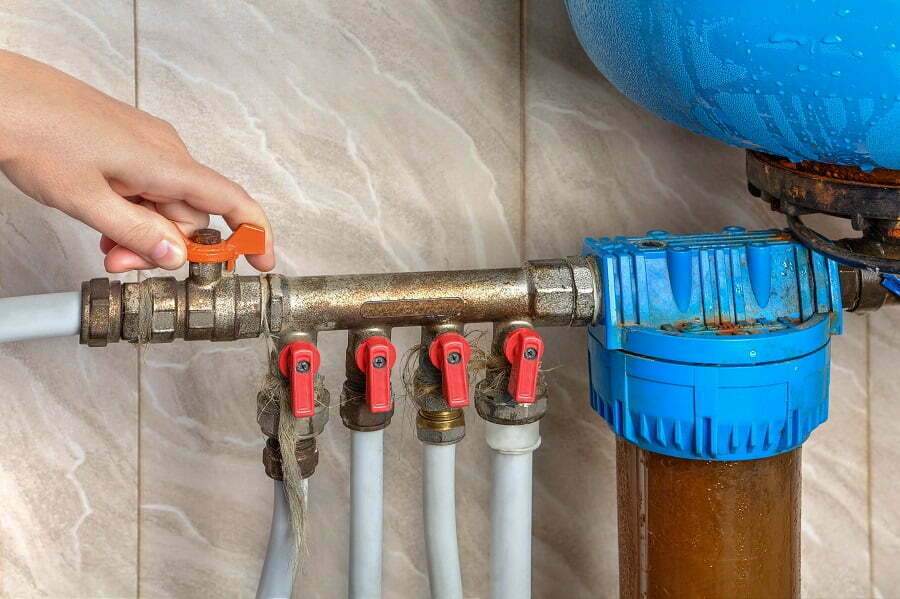Last updated on
Here are the seven steps you need to take in order to repair water damage in your home. Read on!
Water damage can be a huge headache. Whether it’s from a broken pipe, a flood, or something else, water can cause all sorts of problems in your home. If left untreated, it can cause a lot of problems in your home, both structurally and financially.
In this post, we will discuss 7 steps that you need to take in order to repair water damage. Water damage repair can be a complex process, so it is important to follow these steps carefully. We recommend hiring a water damage repair contractors to help with the process in case you find it too difficult to do on your own.
Shut Off the Water Source If Possible As Well As Electricity

Water damage can be a huge pain to repair, and often it’s difficult to do without professional help. If you can, shut off the water source and electricity to the area where the damage is occurring. This will help minimize the amount of water and damage that occurs.
If you’re not able to shut off the water or electricity, try to at least stop the flow of water or electricity as soon as possible. And be sure to call a professional immediately so they can help get things under control. Water damage can quickly become overwhelming and lead to some major problems down the road if not addressed properly.
Remove Excess Water with a Wet/dry Vacuum or Mop
The next step in any water damage repair is to remove as much excess water as possible. This can be done with a wet/dry vacuum or a mop. Make sure to get into all the nooks and crannies to make sure that all the water is removed.
Once the excess water has been removed, you can begin to dry out the area. You can do this with a fan, or if it’s a larger area, you may need to use a dehumidifier. Be sure to keep an eye on the area to make sure it stays dry. If it doesn’t, you may need to take additional steps to dry it out completely.
Dry Out the Area Completely – Use Fans, Air Conditioners, and Dehumidifiers
The third step in any water damage repair is to completely dry out the area. This can be done with fans, air conditioners, and dehumidifiers. If the area is too large or there are too many items for the fans and air conditioners to dry out, then you may need to call in a professional restoration company.
The most important thing is to start the drying process as soon as possible. The longer the area stays wet, the more damage will be done and the more difficult it will be to repair.
Repair Any Damage to Walls, Floors, or Ceilings
Once the water has been stopped, you need to determine the extent of the damage. This can be done by inspecting the walls, floors, and ceilings for any signs of discoloration, mold, or mildew.
If there is visible water damage, you will need to remove the affected materials and dry them out. Once they are dry, you can begin repairing the damage. If there is no visible water damage but you suspect that there may be damage hidden behind the walls or under flooring, you should call a professional to inspect for hidden moisture.
For floors that have been damaged by water, consider adding a polyurea concrete floor coating to provide a durable and waterproof surface. This innovative solution not only protects your floors from future water damage but also offers an aesthetically pleasing finish.
Clean Up Any Mold or Mildew That May Have Formed As a Result of the Water Damage
Cleaning up mold and mildew is an important step in water damage repair. Mold and mildew can cause a number of health problems, so it’s important to get rid of them as soon as possible.
Here are a few tips for cleaning up mold and mildew:
- Use a detergent solution to clean the affected area. Be sure to rinse the area well after cleaning.
- Dispose of any materials that have been affected by mold or mildew. This includes rugs, furniture, clothes, etc.
- Keep the area dry and clean until the repairs are complete.
Sanitize the Area to Prevent Bacteria Growth
If you’ve had any water damage in your home, it’s important to take steps to sanitize the area and prevent bacteria growth. Bacteria can cause a number of health problems, so it’s best to take precautions to avoid them.
One easy way to sanitize the area is by using a bleach solution. Mix one part bleach with nine parts water and spray or pour it over the affected area. Let the solution sit for about 10 minutes, then rinse it off with clean water.
Contact Professionals for Assistance If the Damage Is Too Extensive
If the damage is too extensive, it is best to contact professionals for assistance. Water damage repair can be a complicated process, and attempting to DIY it may end up causing more damage. Professionals have the necessary equipment and expertise to get the job done right.
Recap:



